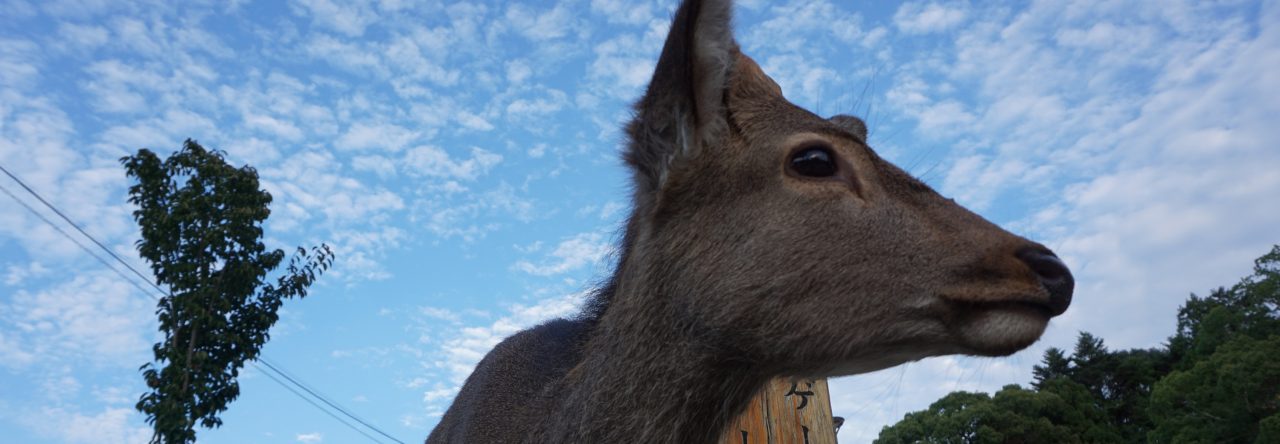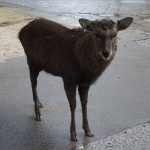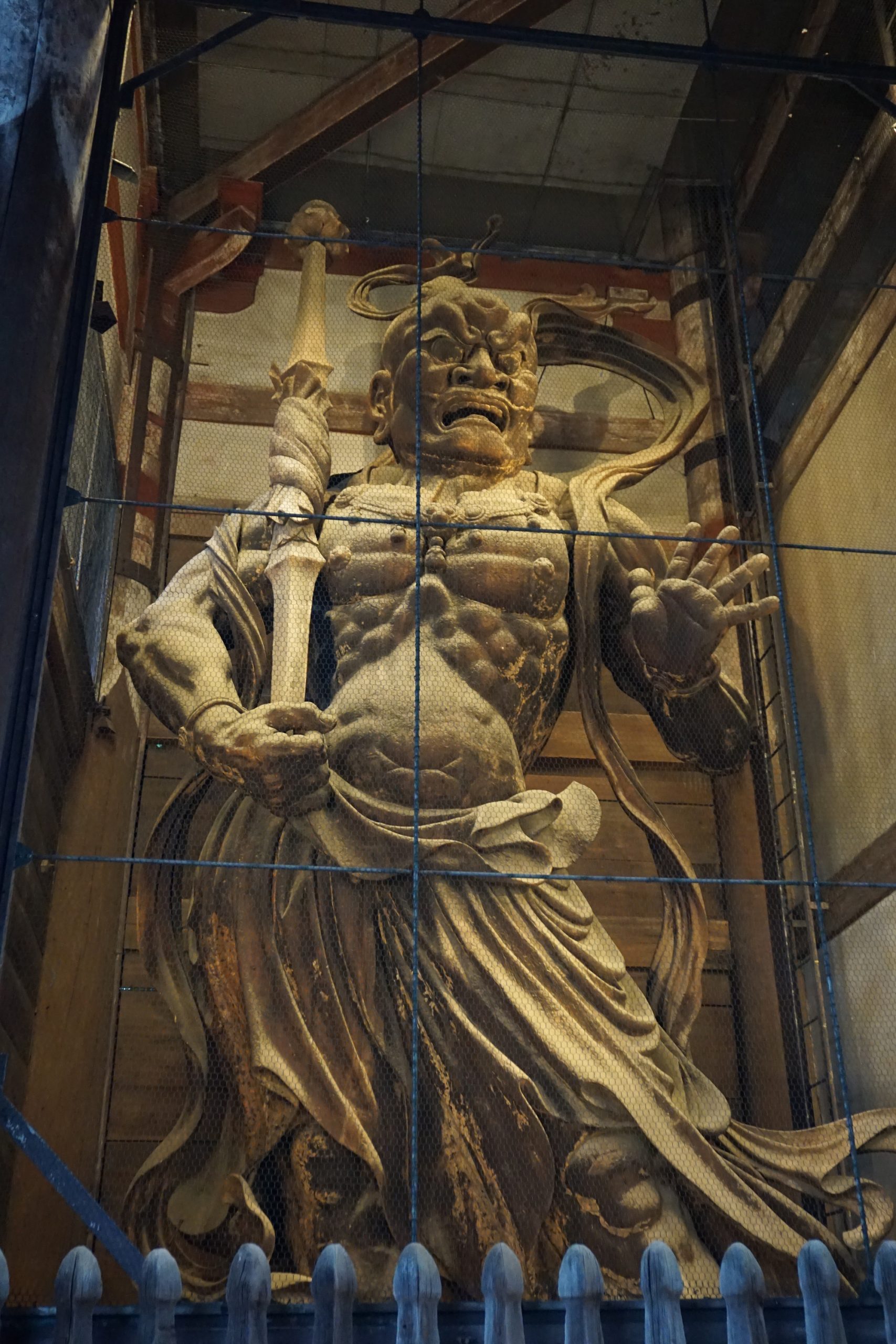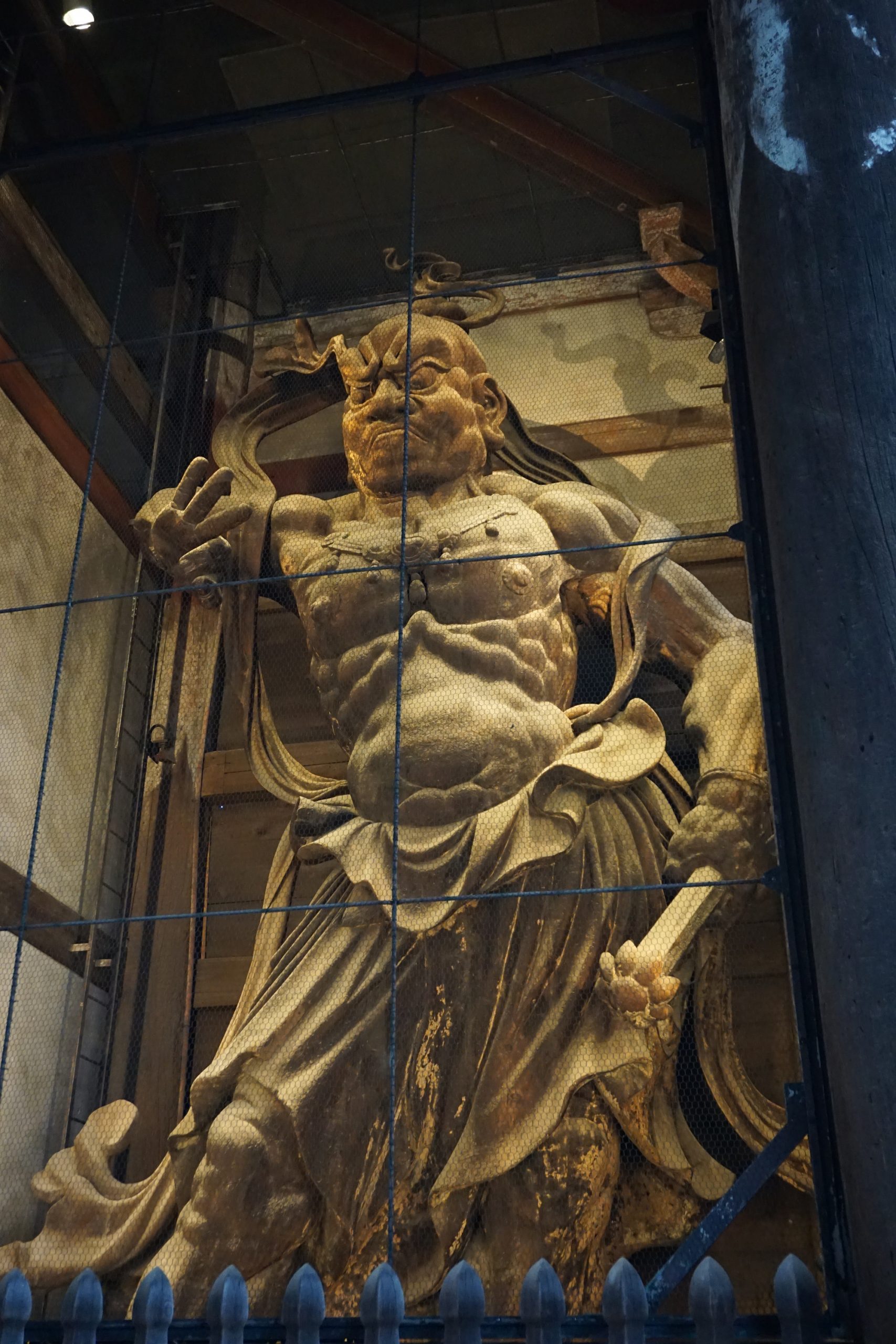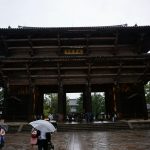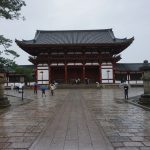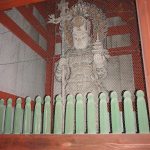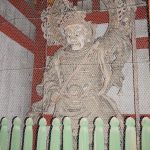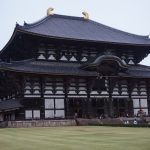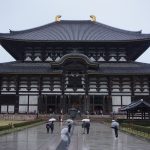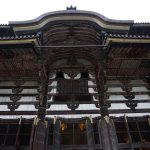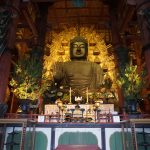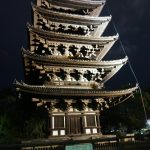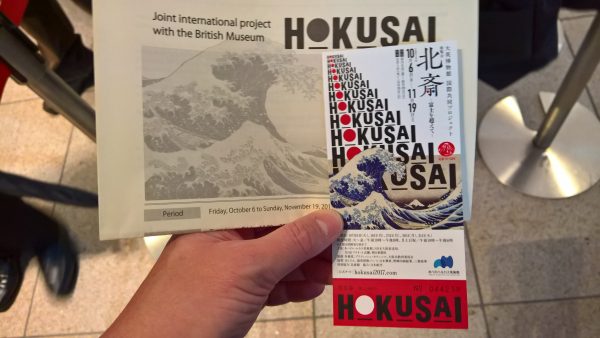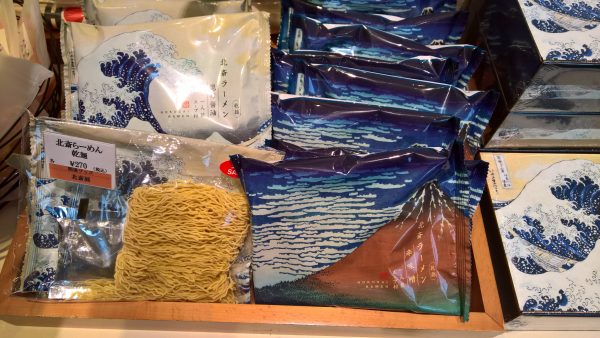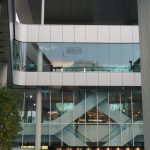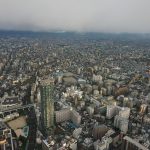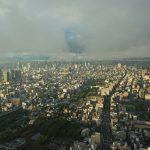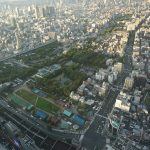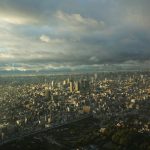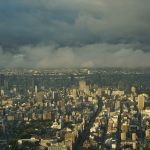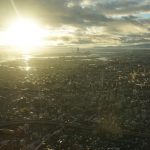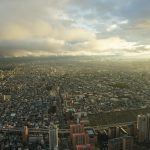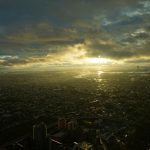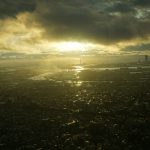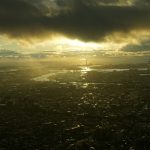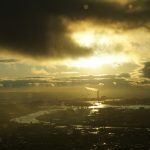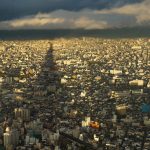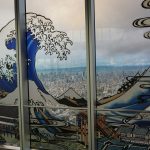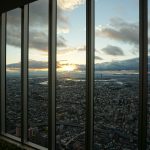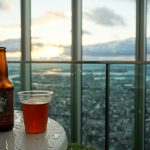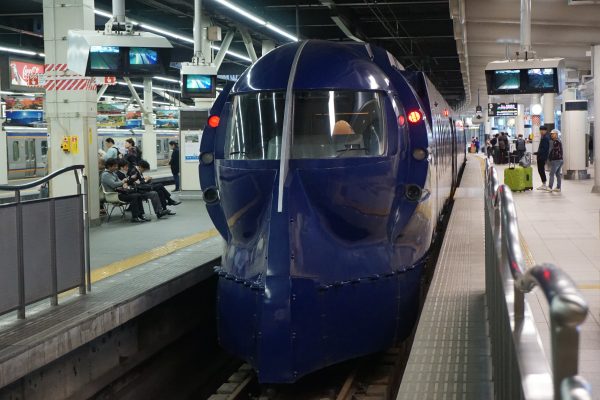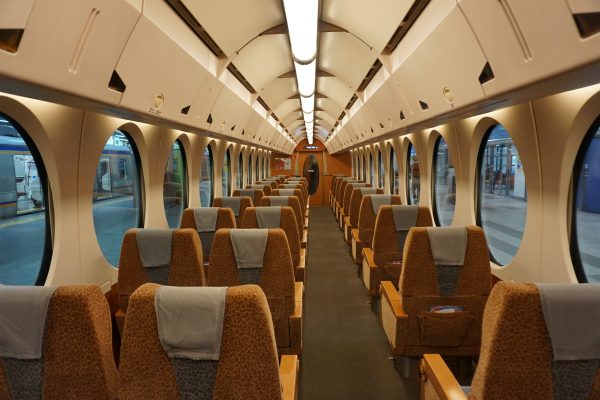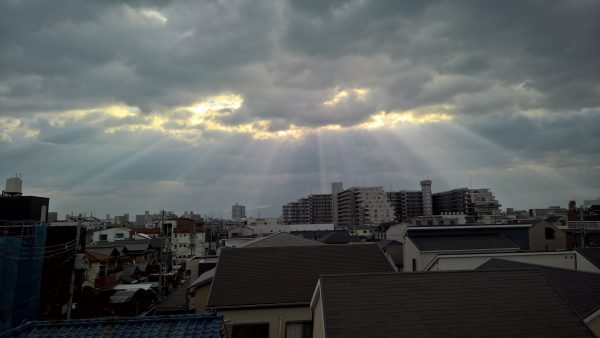Saturday 28th
Last full day in Nara, weather not great so decided to take breakfast at the hotel and spend a few hours catching up on the blog. On my arrival I had discovered that a once a year exhibition was occurring at the Nara National Museum, the The 69th Annual Exhibition of Shōsō-in Treasures. Ticket acquired, that was my destination for the afternoon.
In Nara, it seems it’s impossible to throw a rock without hitting a Buddhist temple or Shinto shrine – and then they get annoyed about it. I’d seen some of the further flung sites on my ramblings, but now it was time to tour the biggest of them all – Tōdai-ji, the largest wooden building in the world, even though it’s a third smaller than when it was last rebuilt in 1709 after being consumed by fire.
My route took me past tourists, trinket shops, and many damp – but still picturesque – deer, some of whom were clearly annoyed at the drop in visitors due to the weather, and were bullying the more timid visitors for more shika-senbei. Passing through the nandaimon (Great South Gate) I viewed the 8.4metre tall guardians, dating from 1203, commonly known as the “Ni-ō (Two Kings) of Tōdai-ji”.
Onwards to the Great Buddha Hall, or Daibutsu-den. It’s an amazing sight, looming over you as you get closer. Once inside, the 500 tonne, 15m high Vairocana Buddha is just astounding. With his attendants either side, and two more guardians at the rear of the hall, it’s awe-inspiring.
- Bishamonten
- Komokuten
Then onwards to the museum for the exhibition – information here. The Shōsō-in (正倉院) is the treasure house that belongs to Tōdai-ji in Nara, Nara, Japan. The building lies to the northwest of the Daibutsuden, and houses artefacts connected to Emperor Shōmu (701–756) and Empress Kōmyō (701–760), as well as arts and crafts of the Tempyō period of Japanese history. Once a year around 60 of the 9,000 items are selected to be exhibited – the collection is not open to the public, and since it is a revered resource of imperial treasures the items have been kept in amazingly good condition. It’s quite stunning to see a carefully restored gigaku mask used in plays – made of papier mache and leather, it’s around 1300 years old.
Rounded off the day at LBK Craft – round 2 of the wagyu beef!
Sunday 29th
Morning train to Osaka Namba station. By this time, the second typhoon of my trip was passing through earlier than expected, but further south offshore. Lots of rain and wind, but no disruptions to travel.
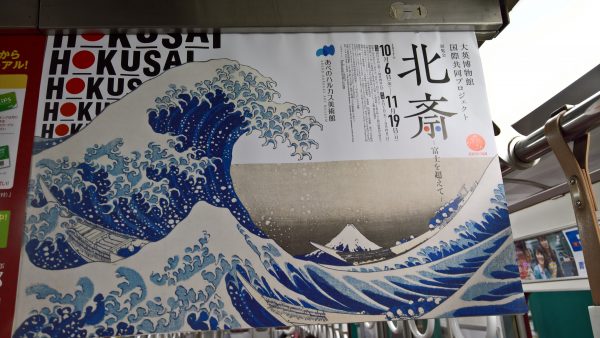 On the train, I spotted an advertisement for an art exhibition – a display of the works of ukiyo-e artist Katsushika Hokusai (1760-1849), whose “Thirty-six Views of Mount Fuji” and “Under the Wave off Kanagawa” have become iconic images. I was so pleased – I had missed an exhibition of his works at the British Museum over the summer, so imagine my surprise when I found that this was the second showing of that same exhibition. After checking into my hotel and finding lunch, I headed for the Abeno Harukas building – tallest building in Japan and home to the Abeno Harukas Art Museum.
On the train, I spotted an advertisement for an art exhibition – a display of the works of ukiyo-e artist Katsushika Hokusai (1760-1849), whose “Thirty-six Views of Mount Fuji” and “Under the Wave off Kanagawa” have become iconic images. I was so pleased – I had missed an exhibition of his works at the British Museum over the summer, so imagine my surprise when I found that this was the second showing of that same exhibition. After checking into my hotel and finding lunch, I headed for the Abeno Harukas building – tallest building in Japan and home to the Abeno Harukas Art Museum.
It was incredibly busy – a couple of hours spent queueing past many of Hokusai’s later works, once more I was one of the only Western faces in the massive crowd. Again, no photos allowed, so I picked up the exhibition catalogue afterwards. Most of the text was in Japanese – more reason for me to study! – but all the artworks were titled in English as well. I decided to pass on the Hokusai themed ramen noodle kit.
- Ramen time
Following the exhibition I took the elevator up to the top few floors, where the Harukas 300 observatory gives amazing views out over the city. And with the sky starting to clear after the typhoon, and the sun heading towards the horizon, there were some memorable sights.
Rounded off the evening with a mini pub crawl of 3 of the best local craft beer spots.
Monday 30th
With a slightly heavy head, I made an early start to Namba station, to catch the futuristic yet retro looking Rapi:t (ラピート rapiito) train to Kansai International Airport. The trainsets, officially designated as the Nankai 50000 series, were designed by architect Wakabayashi Hiroyuki and won the Blue Ribbon Prize in 1995, 1 year after entering service.
It was one last reminder for this trip of how the Japanese bring a unique, and detail focussed, twist to so many aspects of their lives. Once again, I really didn’t want to come home – one of these days I may end up staying there…
